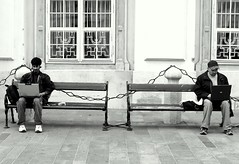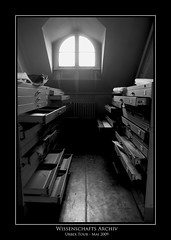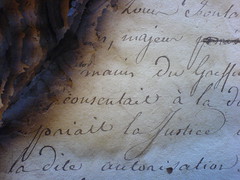
My father died very suddenly when I was eighteen years old. Shortly after his funeral, my mother dreamed he came back to life. She couldn’t explain how; he was just back. The weird thing was that the dream seemed largely to be about the bureaucracy of death. My parents sat on the couch for a long time trying to figure out how to navigate the funereal red tape in reverse. How did one undo a death certificate? How would they reinstate his credit cards and financial records, and how was he going to explain this at work?
My dreams about him are less comical.
I once had a swimming dream where I could see him under water, but could neither reach him nor get his attention. I kept yelling Tėte! Tėte! (Dad! Dad!), diving down trying to reach him as he swam away.
In my last dream, he was lying in bed at our old house wearing blue pajamas. My mother lay beside him. Downstairs, both the the lights and stereo were on, and on my way to bed, I thought to myself how careless my father had been in not turning these off. I had a feeling that there was something strange about his being up there in bed, but I couldn’t pinpoint exactly what. I knew I hadn’t seen him touch my mother in a very long time, or kiss her, or help her in any way, and I couldn’t figure out why. Until I remembered, and woke up.
It took me years to forgive him for abandoning my mother at the moment when she really began to need him, when her Multiple Sclerosis finally became debilitating. Perhaps I even blamed him for worsening her condition. It’s no coincidence that she began using a cane shortly after his death. The stress of his death had brought on an attack.
I have now lived longer without my father than I did with him. I no longer blame him for dying, or for leaving my mother alone in this world, or for making her sicker. I am no longer angry at him.
Instead, I concentrate on my mother as she continues to live and to persevere in her own way.
Ten years ago, she told me in a terrible phone conversation that she didn’t think her body would last another decade. And yet, here she is. She is wheelchair-bound, and has lost the use of three of her four limbs, but when she turned seventy a couple of years ago, it felt like a victory against death. Her life is still hers to live and her story still hers to tell.
I have no doubt that the shock of my father’s sudden disappearance is at the root of my drive to remember and record life stories. Writing about him, about my grandmother, about Šimaitė, Djaout, and others is the one way I know how to fight oblivion and darkness.
Life-writing. Death-writing. Toute same, as my three-year-old son would say in his fusiony Franglais. It’s the same thing.
And if my father is the death in my life-writing, my son is the life in my death-writing. He is both the reason I get up and the alarm clock that wakes me. In many ways, it’s for him that I remember the dead, because I want him to know their stories too.
[Photo by slightly confused]











